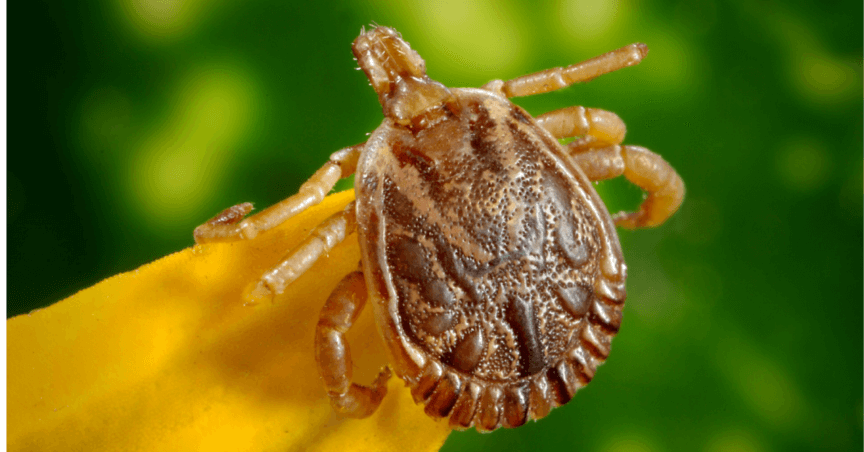10 Lyme Prevention Tips:
- Wear long pants and sleeves that are tight at the waist, wrists, ankles and neck if you’re hiking in grassy or wooded areas. If they are not tight consider using tape at wrists and ankles.
- Be aware of the common Lyme symptoms, especially if you spend time in high-risk areas. Seek medical help early if you experience symptoms.
- If you discover a feeding tick, use a safe removal method. removing the tick correctly will reduce your risk of infection.
- Check the exposed, hairy regions of your body EVERY DAY during camping trips. Remember that ticks are tricky and like to hide in hair and folds. Check your friends and family for ticks and have them do the same for you – you can’t see your entire back and scalp.
- Avoid high risk Lyme areas during the late spring/summer.
- Keep the grass in your yard cut and the hedges trimmed and neatly trimmed. Clean up your yard & keep it clear of tick habitats, like piles of dead leaves, long grasses, bushes and woodpiles.
- Check your body AND all your clothes for ticks after being in the garden or the woods. Ticks can cling to the folds of your clothing and bite you when you put the shirt/pants back on.
- Always wear insect repellent when travelling through high-risk areas.
- Don't feed wildlife! Deer are one of the main hosts for Lyme-carrying ticks.
- Ensure your pets are tick-free, consult your veterinarian.*for more info visit Canadian Lyme Disease Foundation
What is Lyme disease?
Lyme disease is an infectious disease spread through the bite of infected ticks. It is caused by the bacteria called Borrelia burgdorferi.
Where does Lyme disease come from?
In Canada, two main types of ticks carry & spread Lyme disease:
- In British Columbia : western blacklegged tick (Ixodes pacificus)
- In southeastern and south-central regions of Canada:blacklegged tick (or deer tick, Ixodes scapularis)
The Blacklegged tick is more likely to be infected with Lyme but infections are on the rise across Canada. Ticks are most often found in forested areas, in leaf litter, or on shrubs and tall grass. The ticks reach upwards from vegetation to try and “catch on to” a passing human or animal.
Ticks become infected with Lyme disease bacteria by feeding the blood of infected wild animals, such as:
- rodents
- deer
- birds
Once infected, ticks can spread the bacteria to humans and pets, particularly dogs. Dogs & cats will often bring unattached ticks into the home on their fur. Luckily, in most cases, the infected tick must attach and feed for at least 24 hours before the bacteria can be transmitted.
What do ticks look like?
It really helps to know what you are looking for. Most people are infected from the bite of immature ticks called nymphs. These nymphs are very hard to find as that are about the size of a poppy seed. Adult ticks, are larger but are still only about the size of a sesame seed. See the picture below for the different sizes of a tick within it's life-cycle.
To make things even more difficult, not only are ticks very small but, their bites are usually painless. There is a good chance you may not even know you have been bitten so prevention is the key!

How do I remove a tick?
Correct removal of a tick that has attatched to the skin is VERY important. DO NOT use Vaseline, flame, or anything hot tool. All you need is a pair of needle nose tweezers and a steady hand.
For information on removing a tick correctly see these links here:
https://www.cdc.gov/ticks/removing_a_tick.html

Co-founder of Healthy Family Media and the Healthy Family Expo, Kay is an adventurer & Ironman triathlete, as well as mum to an active 11-year-old. Originally from Montreal, she has been proud to call British Columbia home for over 15 years. Whether running, hiking & biking in the mountains or creating healthy meals in the kitchen, Kay is always up for something new. Her contagious enthusiasm & zest for life mean we’re never quite sure what she’ll be up to next, but we’re sure that it will be an amazing adventure!




